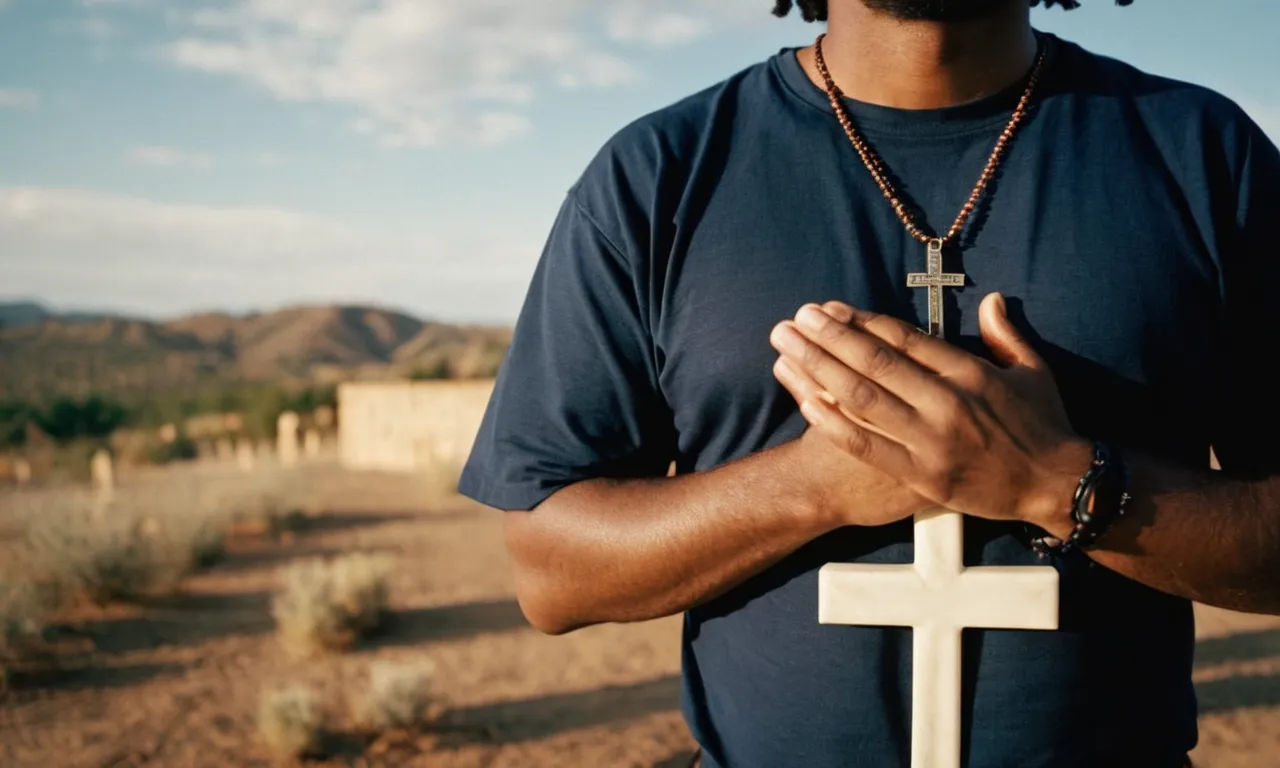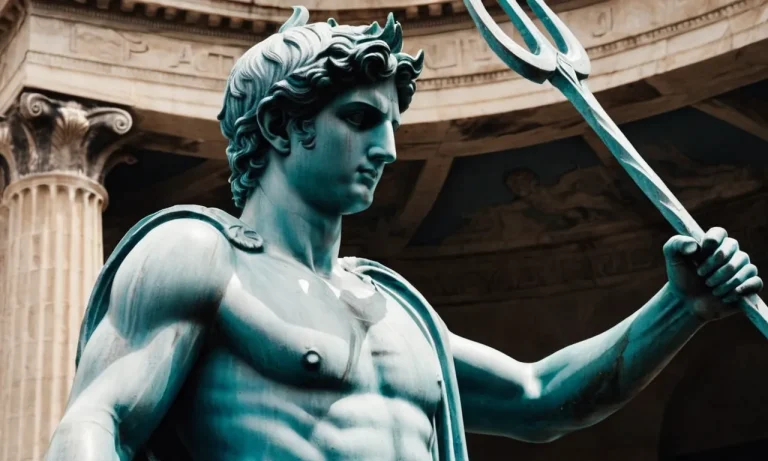What Would Jesus Do? Understanding The Origins And Meaning Of Wwjd Shirts
The simple phrase “What Would Jesus Do?” printed on inexpensive bracelets and t-shirts became a popular fad in American Christian culture during the 1990s. This trend raised some important questions that are still relevant today: What exactly is the meaning behind WWJD apparel?
What are the origins of this phrase? And how did a five-word slogan end up emblazoned across millions of accessories and garments?
If you’re short on time, here’s a quick answer to your question: WWJD stands for “What Would Jesus Do?” and became a popular slogan on t-shirts, bracelets, and other apparel in the 1990s. The phrase encouraged people to consider Jesus’ teachings and actions as a model for their own moral behavior and lifestyle choices.
In this comprehensive article, we will trace the history of the phrase “What Would Jesus Do?”, examine how WWJD merchandise became a religious fad in the 1990s, and analyze the deeper meaning and impact of this ubiquitous slogan.
The Origin and Early History of “What Would Jesus Do?”
Popularization by Charles Sheldon’s Book In His Steps
The phrase “What Would Jesus Do?” originated from the 1896 Christian novel In His Steps by Charles Sheldon. This book told the story of a congregation challenged by their pastor to live one year asking themselves “What Would Jesus Do?” before making any decision.
The novel sold over 30 million copies and was translated into 21 languages, popularizing the phrase.
Sheldon’s book struck a chord in society because it promoted living a Christ-centered life focused on compassion, forgiveness, and service to others. At a time of rapid industrialization, many were concerned about losing their moral compass.
In His Steps provided a simple phrase to realign one’s priorities and actions with Christian ideals.
Roots in the Social Gospel Movement
The “What Would Jesus Do?” message emerged from the Social Gospel movement around the turn of the 20th century. This was a Protestant Christian intellectual movement focused on applying Biblical principles of charity and justice to address social problems like poverty, inequality, greed, and violence through structural reforms.
Leaders like Washington Gladden and Walter Rauschenbusch promoted this theology.
Charles Sheldon and his novel In His Steps grew out of this tradition of the church actively engaging with secular society to pursue social reform and morality in public and commercial life, while keeping the example of Jesus Christ at the center. The phrase “What Would Jesus Do?”
encapsulated this view in a simple slogan.
A Simple Phrase that Captured the Public Imagination
While the Social Gospel movement drove the ideology behind “What Would Jesus Do? “, it was Charles Sheldon’s remarkably popular novel that transformed the phrase into a national sensation and symbol of Christian ethics and activism focused on social justice.
By the 1930s, “WWJD” was a widely-recognized concept and motto to motivate moral behavior in both public and private life for many American Protestants.
The elegance and clarity of “What Would Jesus Do?” cut through theological complexity and urged people towards living a Christ-like moral life, serving the poor and vulnerable. Over 125 years since Sheldon penned his novel, “WWJD” remains a cultural icon encapsulating the essence of socially-conscious Christianity.
The Mainstream Popularity of WWJD Merchandise in the 1990s
WWJD Jewelry and Accessories Take Off
In the mid-1990s, bracelets, necklaces, t-shirts, and other accessories with the “WWJD” abbreviation became extremely popular, especially among Christian youth groups. According to one estimate, over 50 million WWJD bracelets were sold by the end of the decade (Christianity Today).
The inexpensive rubber or silicone wristbands allowed the faith-based message to be spread widely.
Christian bookstores reported that WWJD merchandise flew off the shelves faster than they could stock it. Beyond bracelets and necklaces, one could find WWJD hats, bags, bumper stickers, bible covers, and more.
For a time, it was a sign of faith among young Christians to wear WWJD apparel or accessories.
Criticisms and Parodies Emerge
However, some Christian leaders (Los Angeles Times) began to criticize the trend asMISSING WORDS and hypocrisy if people wore the merchandise without accompanying spiritual commitment. Some noted biblical warnings against public displays of faith for their own sake.
Satirical versions like “What Would Jenna Do?” (referring to a 90s pinup) also began to appear.
There were also concerns that too much WWJD merch was being produced in overseas sweatshops. Some religious leaders challenged people to carefully consider the human rights origins of the goods they purchased.
So while still immensely popular, criticisms of the genuineness and sourcing of some WWJD merchandise impacted its growth by the late 90s.
The Fad Fades but Leaves a Lasting Impact
Like most major fads, the intense popularity of WWJD apparel had faded dramatically by the early 2000s. While one can still readily find WWJD products online today, they are now only a small niche item rather than a widespread phenomenon.
However, for many Christians, the simple “What Would Jesus Do?” phrase continues to be a meaningful way to evaluate decisions and actions. The 90s fad served to bring the WWJD concept, originally coined in the 1890s, to the forefront of the cultural consciousness. So while the popularity of bracelets passed, the central idea continues to prompt reflection on living a moral, Christ-like life.
The Enduring Influence and Meaning of “What Would Jesus Do?”
A Reminder to Follow Jesus’ Example
WWJD shirts served as a tangible reminder for Christians to consider how Jesus would respond in various situations. The bracelets and apparel aimed to encourage compassion, kindness, honesty, and moral living by prompting people to reflect on Christ’s teachings and actions.
Christians were called to follow the Golden Rule, practice forgiveness, show mercy, defend the vulnerable, and value relationships over worldly success. WWJD gear provided a visual cue to choose righteousness over selfishness or sin – just as Jesus did.
Encouraging Compassion and Righteous Living
The WWJD movement highlighted the importance of compassion and righteous living at a time when individualism and materialism were on the rise. The slogan urged wearers to consider how their choices impacted others, rather than solely considering personal happiness or gain.
It inspired many to volunteer, donate to charity, and stand up for those in need. For Christians seeking to live out their faith authentically, WWJD merchandise served as a reminder that following Christ requires sacrificing self-interest to love one’s neighbor.
Issues of Consumerism and Superficial Application
Despite its positive aims, some criticized WWJD gear for fueling consumerism and superficial application of faith. The popularity of WWJD products led to an influx of merchandise – from hats to coffee mugs – that some felt corrupted the slogan’s purpose.
Additionally, wearing WWJD did not guarantee changed actions or priorities. While many took the message to heart, others displayed the gear without substantially altering their lifestyles or treatment of others.
Consequently, WWJD apparel became associated with performative, surface-level Christianity by some critics.
Nonetheless, WWJD left an enduring mark on American Christian culture. The slogan’s simple but profound invitation to follow Christ’s example shaped many believers’ priorities and behaviors for decades to come. Though sometimes misapplied, the driving concept behind What Would Jesus Do?
merchandise and media campaign – choosing righteousness in everyday situations – continues to challenge Christians’ conduct and values today.
Conclusion
In conclusion, WWJD merchandise sparked a nationwide fad, but also raised thought-provoking questions about how to live a moral, Christ-centered life. The slogan remains popular today, printed on apparel and accessories as a compact reminder for Christians to consider how Jesus might act when faced with life’s choices and dilemmas.
While some criticize WWJD items as feel-good consumerism, the phrase continues to inspire many to reflect on imitating Christ through compassionate action. Regardless of one’s stance on the merchandise itself, the legacy of this simple slogan is a heightened awareness of really asking ourselves “What Would Jesus Do?”
when it matters most.








